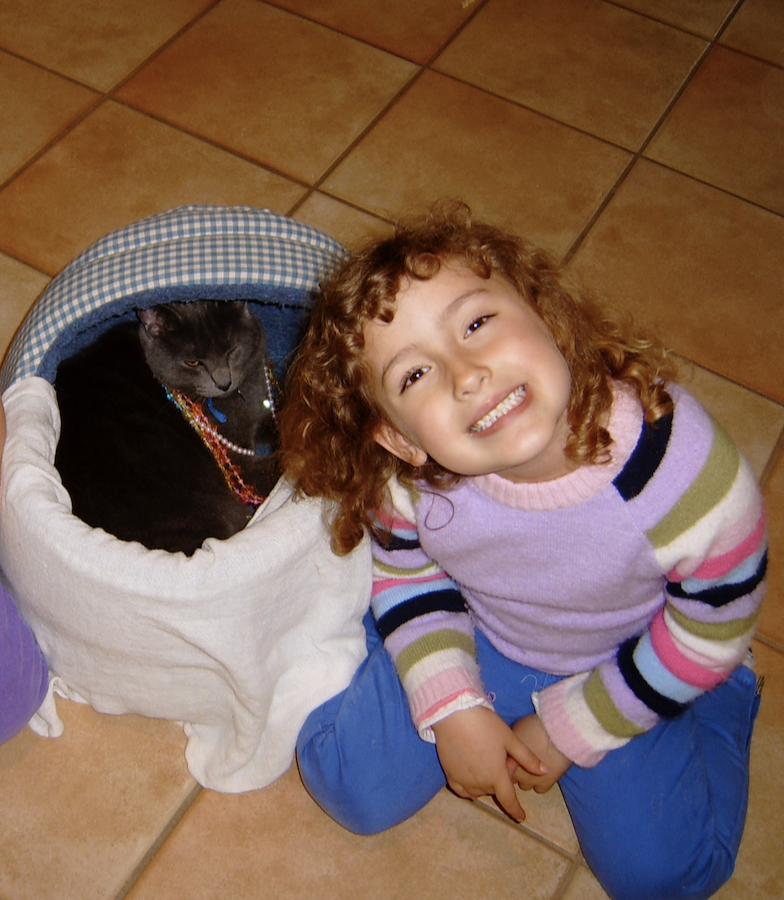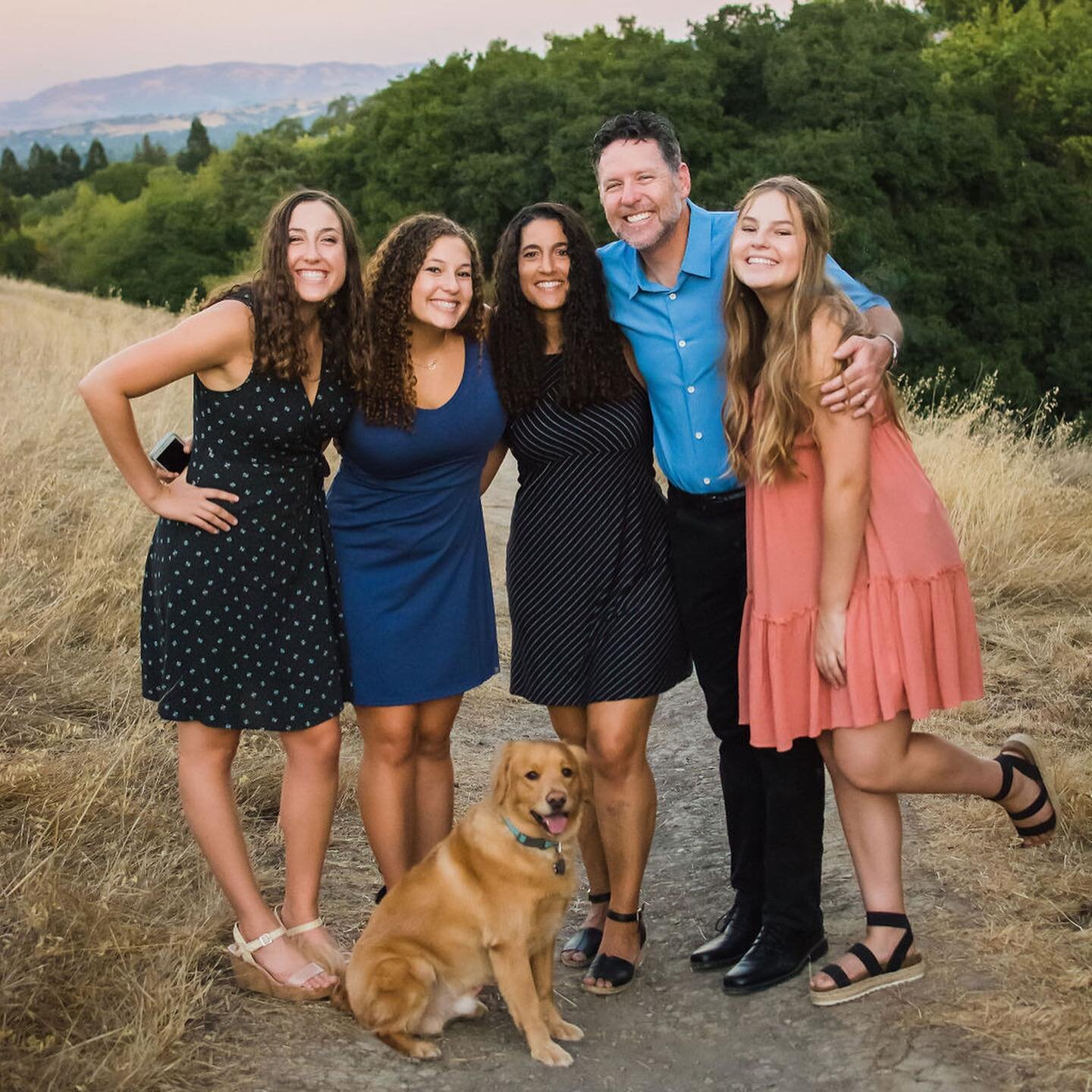Fearless Emily meets anxiety
When I first saw Emily, her smile made me instantly happy. She is always positive and happy on Instagram. I knew I wanted to tell her story but, I didn’t know what an amazing story it was! Emily is an Ambassador for the Spokin App, and through her Instagram she shares Spokin verified brands, new restaurants and foods. She is a kind soul with a passion for food. She is allergic to peanuts, some tree nuts, and is intolerant to gluten. Emily and I did a Youtube video where we sent snacks from the UK and the US, just in time for both of us to start our new year of University. We had such a good time, and if you want to see the video it is at the end of this blog.
I hope that Emily’s story will inspire you and if you are handling something similar, it will encourage you to get some help and hopefully help you feel less alone.
Emily’s Story
“I stayed reaction free for over 15 years”
Hi, I’m Emily, and I am the oldest of three girls. When I was young I took on the role as the outspoken, independent, and extremely extroverted one. I wanted to be the older sister; nosy, a part of everything, quite strong (possibly bossy) and extremely curious. Unfortunately, at times my allergies weren’t on board for that. I had a few major reactions when I was younger. I would make friends with other children, sharing snacks, eating cookies out of my neighbour’s cookie jar; all the while not realising that those snacks were, peanut butter filled pretzels and the cookies, whilst safe, were cross contaminated with the previous cookies in the jar, peanut butter ones.
However, even with these reactions, I never let them stop me. I continued to be fearless and curious. Even days after the reactions I would continue like nothing had happened. I never thought my allergies were a massive part of me; they were something I thought about occasionally, I mentioned them in passing every so often, but I never felt limited in my life. I carried the mindset of whatever opportunities I wanted to pursue would not be any different because I had food allergies.
I am not sure how, but throughout elementary school and high school, I didn’t have a single allergic reaction. There were several close calls - inches away from putting an allergen in my mouth close - but I managed to stay reaction free for over 15 years. As a result, this period kept my identity of ‘fearless’, especially when it came to food. I ate out at restaurants with my friends, rarely mentioning my allergies. I travelled with my water polo club, venturing out of the United States for the first time; which allowed me to try countless new foods in many different countries. I envisioned possibilities of new places to travel and the adventure that awaited me; food was a massive part of that dream. My curiosity for the world, coupled with the independence I had fostered all my life, I felt confident that I would always have a fearless approach to travel, food and adventure.
I was in my last semester of high school when that all changed for me. I was dreaming of my future, the excitement and possibilities that await once you leave high school. I was accepted in to Scripps College and had a place on their water polo team. I was competing on my high school’s competitive government team, and we had just found out that we had qualified for the National Competition. It was like nothing could stop me, and my allergies were the furthest blip on my radar. But, one evening that all changed. One night took me, from fearless Emily to anxious Emily. One night changed it all for me.
I was out at a restaurant with friends, like I had been many times before. I ordered a salad, that I had ordered before, but one bite and I knew something was wrong. I didn’t tell the staff about my allergies that night, and I didn’t have my EpiPen. The salad dressing, that I was told before was a ginger dressing, this time around it was a peanut dressing. Thankfully, my mother came to the restaurant with the EpiPen and when we were in the car I used it. We thought I had used it just in time, but as we were driving home I got the worst symptoms imaginable. My throat started closing, I was sick and I almost passed out. We still aren’t sure if it was a biphasic reaction, but whatever it was, I wasn’t the same after it. It was a frightening, eye-opening experience, and while I physically recovered in a couple days, I felt different - nothing like I have felt before.
I began to feel varying levels of anxiety, when I would sit down at a restaurant or read labels on packaged foods. Most of all, I couldn’t stop fixating on the circumstances surrounding that reaction. I tried to suppress those feelings, diminishing them as merely getting ‘cold feet’ about leaving home and distracted myself by saying goodbye to friends and packing for college.
I did make it to sunny Southern California to start my freshman year of college. However, despite the excitement of moving into the dorms and starting the next chapter of my life, I was still suffering from the mental health affects. The uncertainty of navigating a new city, roommates, and a college dining hall was worsened by the burden of managing post-reaction anxiety and it began to seriously affect me.
Three months into my first semester of college that I began showing symptoms of post-traumatic stress disorder (PTSD). Any time I would eat, my head would flooded with memories from that last reaction. I would often wake up in the middle of the night in a panic, feeling like I was in the midst of having an anaphylactic reaction. It felt as though every day I was having a mental battle against the fear of having another reaction.
At the time I didn’t know that what I was going through happened to a lot of allergy reactors, and I felt as though anyone I mentioned it to would not understand. Some of my friends could tell I was dealing with anxiety and mentioned that I should speak to an on-campus therapist. I didn’t think any therapist would understand, so they wouldn’t be able to treat the anxiety I was dealing with around food anyway. I brushed it off and pushed the thought of therapy out of my mind. Looking back, I wish I had not waited so long to speak up about my mental health.
In the December of that year I went back home for the holidays. My family home is kept completely free of my allergens, but I still struggled with the thoughts of a reaction whenever I was around food. I have always been extremely close with my family, and they pick up on it, pretty instantly. We had long discussions, they listened, they understood, and they helped me realise that seeking help is what I should do moving forward. Their support, along with my boyfriends, throughout that period of my life helped me find the treatment I needed. We chose EMDR therapy to help, as it has been known to help patients dealing with PTSD.
I was still sceptical, but I did my own research and I decided I wanted to try it, the other option would be to continue living in an anxious state - therapy seemed more inviting. The therapist had never treated a patient with food allergies before, but he was incredibly kind and thoughtful, w spent lots of time working to better understand the fears and perspective of someone living with food allergies. In my first session we addressed my own stigmas surrounding therapy, and he explained that he was just like any other doctor.
“If you were to fall and tear a tendon in your knee, you would immediately go to the doctor, get surgery to mend the tear, and go through several months of physical therapy to avoid scar tissue build up. Similarly, when you undergo a traumatic experience, your brain stores the memory, not as a story, but as sensory fragments, creating a buildup of sensory input. EMDR therapy works to reprocess the brain’s response to the traumatic memory, in essence cleaning up any buildup of scar tissue.”
Hearing it this way helped me to normalise therapy and see mental health treatment as something that could potentially help me. My therapy sessions were similar to the general framework of EMDR (past, present, future); however, they were centred around anaphylaxis trauma.
What it looked like for me:
Recount all my past anaphylactic episodes and work through exercises that would help reprocess the more traumatic and emotional parts
Identify current-day triggers that were causing me to fixate on my last reaction (the main triggers I identified were dining hall food, having to eat alone, being in a restaurant)
Identify scenarios that I could potentially encounter that would trigger anxiety about future reactions.
In each of these circumstances, I was asked to picture a vivid visual image from the traumatic event and describe the emotional response it made me feel. Then I was guided through reprocessing exercises - eye movements, tones, and taps - while I was fixating on the traumatic image. The whole process was exhausting and one of the most difficult experiences I have had, but I left feeling hopeful that it would help me; that was only day one.
A few days later, I was noticing that my anxiety levels were lower. If I would think back to past allergic reactions, when normally the memories were vivid, they were fuzzier and the details, the emotions felt dim. Whilst I know that therapy didn’t completely get rid of the anxiety completely, it did help to start the process and the path to recovery. Thinking back to it, the most important part was acknowledging that I needed help and asking for it. After a few months I started feeling more in control of my anxious thoughts. It felt less scary to eat alone, I was able to try new foods, and I even allowed others to cook for me. But the biggest change was, that I had confidence to speak about my mental health and anxiety with people in my life.
In therapy, we discussed eating out at restaurants which I used to love to do before the reaction. We discussed ways in which I could get back to feeling comfortable with that again. My therapist suggested that I should start with a blank slate and to slowly work to add safe places that I feel comfortable with and to visualise my recovery.
January 2020, I started ‘ems nut free eats’ on Instagram. I started it as a place where I could document new foods and restaurants I tried through recovery. Any new food I tried, I shared it. Although it was simply posting pictures of food on plates, to me it was a larger symbol of a mental achievement. I hoped that it would help me, hold me accountable, and keep me pushing myself to gain back some of the courage and tenacity I had when I was younger. I never expected to be a part of a community, be introduced to so many wonderful people and feel understood.
It is now two and a half years after the reaction, and I am slowly returning to that fearless Emily. In the last couple months, I have moved across the country from California to Washington, D.C., by myself; something I only imagined doing in the midst of my recovery. That was a really hard period of my life and while it is extremely difficult to talk about, it has shaped who I am today. I am a public policy student, but now I hope to pursue a career in food policy where I can help The Food and Drug Administration (FDA) with their regulations and improve US laws in how they treat those with food allergies. I am an athlete, I have joined the mental health committee to help increase the visibility of mental health resources on my college campus and decrease the stigmas surrounding athletics and mental health issues.
I am adventurous, extremely passionate about finding new, safe, restaurants and food. Despite dealing with anxiety, I have realised throughout my recovery that, I am still the same person I was when I was younger, but I now tell the staff about my allergies and I always carry my Epipen (or two)!
EMDR
EMDR, short for Eye Movement Desensitization and Reprocessing, is a therapy method that uses visualisation techniques to help patients cope with the psychological effects of traumatic memories. It uses a “three-pronged protocol: (1) the past events that have laid the groundwork for dysfunction are processed, forging new associative links with adaptive information; (2) the current circumstances that elicit distress are targeted, and internal and external triggers are desensitised; (3) imaginal templates of future events are incorporated, to assist the client in acquiring the skills needed for adaptive functioning.” It has been widely effective in helping a wide range of patients suffering from the symptoms of post-traumatic stress disorder; Firefighters to survivors.
IF THERE IS ANYTHING THAT RESONATED WITH YOU IN THIS POST OR ON THE BLOG PLEASE LEAVE A COMMENT, LIKE THE PAGE AND/OR SHARE WITH SOMEBODY ELSE. THANK YOU, FOR READING!
Emily
Instagram @ems_nutfree_eats



























